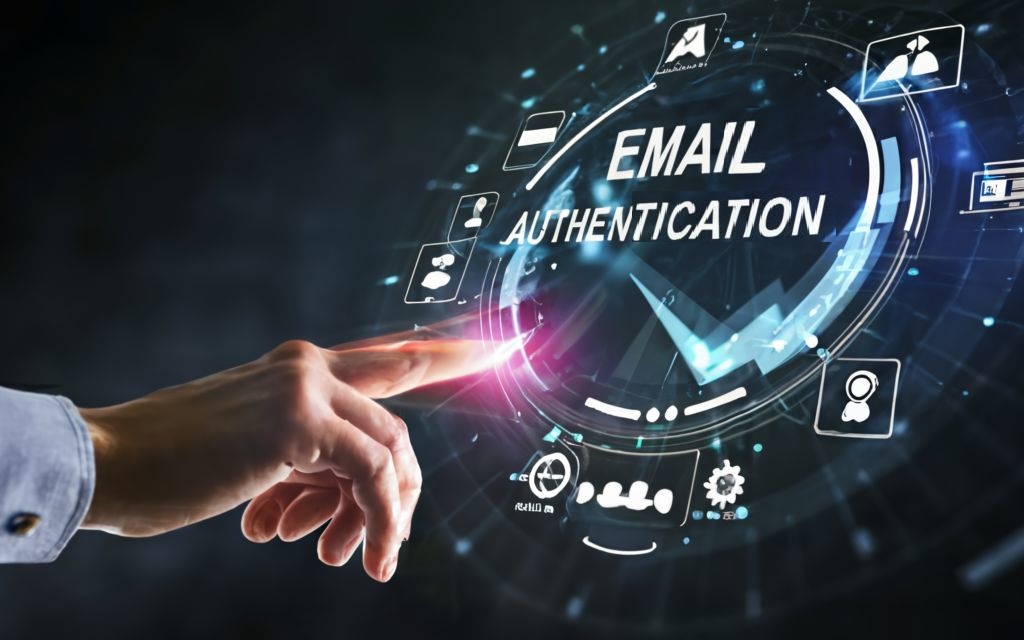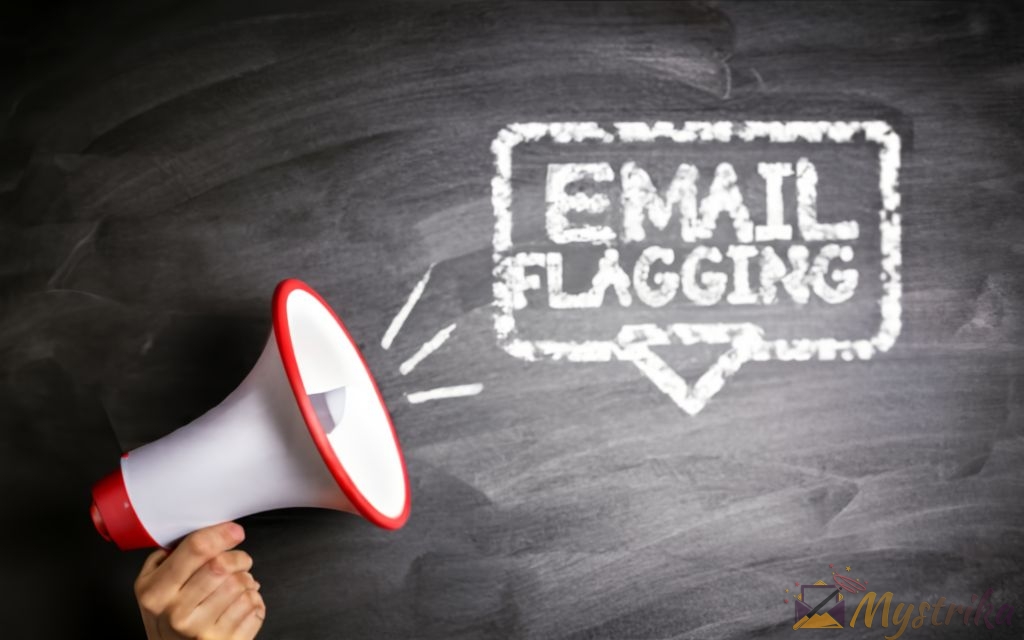Do you obsess over a cluttered inbox? Do mysterious spam filter gremlins make your blood boil? Get your email house in order with this comprehensive guide to taming your messages.
We’ll explore the power of flagging for urgent emails, demystify authentication protocols, walk through domain setup, and drill into Gmail’s intricacies. Plus essential deliverability insights, key tools, and plenty of troubleshooting tips so you can Get Inbox Zero’d. Let’s flip the script on chaotic communications!
Understanding Email Flags
Email flagging is a simple but powerful tool that can help you manage a crowded inbox. Here’s a deep dive into what flags are, when and why to use them, how they work across different email clients, and some best practices to get the most from flagging.
What is Flagging an Email?
Put simply, flagging an email allows you to mark a message for follow-up. Visually, this usually appears as a colorful flag or star icon next to the message in your inbox.
Technically speaking, flags are metadata that identify an email as needing action. Most email services attach this metadata to messages you flag for easier organization.
Common examples of flags include:
- A red flag indicating the message is high priority
- A blue flag marking the message for follow up on a specific date
- A yellow star highlighting an important update from a VIP contact
Flagging serves both organizational and psychological purposes. Visually distinguishing messages reduces the cognitive load of an overwhelming inbox. It also allows for productive email triage by highlighting messages needing immediate attention or future follow up.
Why and When to Use Email Flags
Here are some of the most common scenarios where flagging can be helpful:
Flagging outgoing messages – Flag messages you send that require a timely response or action from the recipient. This allows you to easily track replies and reminders.
Flagging incoming messages – Mark messages from others that you need to follow up on. For example, flagging an email with meeting notes to review the details later.
Flagging for due dates – Assign flag colors or text to indicate when follow up needs to happen by. For instance, a “Reply by Friday” flag on a message.
Flagging important contacts – Visually distinguish messages from key contacts, like your boss or important customers.
Flagging for categorization – Use flags to tag different types of messages, like flagging anything related to an upcoming project.
The key is that flags allow you to visualize your inbox based on priorities and required actions. This saves you from having to remember or search through messages needing follow up.
How Email Flagging Works in Different Clients
Most major email services and clients have built-in flagging systems, but implementation details vary:
Webmail services like Gmail, Outlook, and Yahoo allow flagging messages directly in the inbox view. This adds metadata visible on the message list and often moves flagged messages to a separate tab or view.
Mobile apps like iOS Mail and Gmail mobile also offer flagging options, usually by swiping left on a message or tapping a flag icon.
Desktop clients like Outlook and Mac Mail provide right-click menus to flag messages. Flagged items often appear highlighted or in a distinct view.
Third-party services like Boomerang also integrate with webmail and mobile apps to provide additional flagging options and extensions.
Some differences to be aware of:
- The colors, names, and icons used for different flags
- Whether flags are system-defined or customizable
- How flagged messages are organized and accessed
- If reminders and due dates can be attached to flags
Experiment to see how flagging works across the email services you use for a consistent experience.
Best Practices for Flagged Emails
To get the most benefit from email flagging, keep these best practices in mind:
- Be selective – Don’t flag every message or flags lose their power. Reserve flags for your highest priorities.
- Review frequently – Check flagged messages daily or several times a week so messages don’t linger too long.
- Use color coding – Color code flags for different purposes, like red for time-sensitive messages.
- Add reminders – Optionally set reminders on flagged messages to reappear at certain times.
- Stay on top of replies – Check responses to your flagged sent messages so you don’t miss a window to follow up.
- Clear flags when done – Remove flags from completed messages to maintain an active system.
- Use consistently – Flag within the same system rather than across disconnected clients and apps.
With some discipline, flagging can transform your inbox from a jumbled mess to a structured system organized around timely actions and priorities. Experiment to find a flagging approach that works for your needs and style.

How Email Authentication Works
Email authentication verifies the true sender of a message and prevents spoofing, forgery, and other spam tactics. This section covers how the main authentication systems work, how they keep your inbox secure, the difference between hard and soft fails, and troubleshooting advice.
Overview of SPF, DKIM and DMARC
There are three primary technical protocols used for email authentication today:
SPF (Sender Policy Framework) verifies that outgoing mail originates from a server authorized by the domain’s administrators.
It works by checking that the sending IP address matches the domain’s public SPF record. For instance, an SPF record may specify that only the IP 1.2.3.4 can send mail on behalf of example.com.
DKIM (DomainKeys Identified Mail) cryptographically validates that an email has not been tampered with during transit.
It works by adding a hashed signature to the message header generated with the domain’s private key. Recipients can verify the signature with the domain’s public key published in its DNS records.
DMARC (Domain-based Message Authentication, Reporting & Conformance) builds on SPF and DKIM to provide aggregate authentication status.
It works by checking that the sending domain aligned authenticated via SPF and DKIM aligns with the domain in the From header. DMARC also specifies a policy for handling failed messages.
Using these protocols together provides layered security, as weaknesses in one may be covered by another.
How Authentication Prevents Spoofing and Spam
Email spoofing, where the sending address is forged, has been an endemic problem since the early days of email. Spoofing remains popular with spammers because it helps bypass anti-spam filters.
Here’s how the various authentication protocols counter spoofing and related tactics:
- SPF prevents spoofing by verifying authorized sending systems. Forged sender addresses from disallowed servers will fail.
- DKIM prevents tampering like injecting links that didn’t exist when the signature was generated. Modified messages will fail validation.
- DMARC prevents spoofing by requiring alignment between the domain (“example.com”) and authenticating domains (“mail.example.com”). Mismatches fail.
Requiring authentication status checks has significantly reduced spoofing and improved inbox deliverability rates. Over half of legitimate email now passes DMARC successfully.
Differences Between Hard and Soft Authentication Failures
When an authentication check fails, the receiving server has to decide how to handle the message. There are two approaches:
Hard fail – The message is explicitly rejected or dropped. The sender should receive a bounce notice.
Soft fail – The message is accepted but marked as suspicious. It may be relegated to the spam folder or have restricted privileges.
Hard fails provide stronger security, as they give no latitude to suspicious messages. But they also increase the chance of blocking legitimate emails that fail authentication due to misconfigurations.
Soft fails balance security with deliverability by allowing questionable messages but flagging them as potential spam. Most major providers use a mix of soft and hard fail policies depending on the severity of the authentication failure.
Troubleshooting Authentication Issues
If your emails are getting flagged or blocked as spam, lack of authentication is a common culprit. Here are some tips for troubleshooting and resolving authentication problems:
- Use online tools to validate your DNS records match the requirements for SPF, DKIM, and DMARC. Correct any mismatches, typos, or syntax errors.
- Check the public keys published in DNS for DKIM. Make sure they match the keys configured by your email server.
- Review authentication error bounce messages for any specifics on which checks failed. Also check DMARC aggregate reports if available.
- Try temporarily relaxing policies like DMARC from “reject” to “quarantine” to allow soft fails while debugging issues.
- Check IP addresses in use. Authentication often fails if emails send from an unaligned IP address not included in SPF records.
- Use test messages to validate successful authentication. Confirm alignment of From domains with DMARC policies.
- Disable unused protocols like DKIM if misconfigured. Sometimes having an invalid parameter is worse than omitting it entirely.
With attention to detail and protocol-specific debugging, you can isolate and fix authentication issues for long-term deliverability.

Setting Up Domain Authentication
Domain authentication links your sending domain to your email account, improving deliverability by clearly signaling you have permission to send mail. This section covers what domain authentication is, step-by-step configuration instructions, debugging DNS issues, and manual verification methods.
What is Domain Authentication and Why It Matters
Domain authentication connects your sending domain, like @yourcompany.com, to authorized email services like an ESP or webmail provider.
It works by updating DNS records to point to the email service’s servers. This verifies you control the domain and grants the service permission to send from it.
The benefits of proper domain authentication include:
- Removing the “via” message in emails, promoting your brand
- Improving inboxing by proving you can send from your domain
- Cutting down on spam folder deliveries and blocks
- Increasing trust and engagement with recipients
In short, domain authentication gives your emails the best chance of smooth delivery by clearly validating you as the sender.
Step-by-Step Guide to Configure Domain Authentication
The exact steps to authenticate a domain vary depending on your DNS host and email provider. But the general process follows:
1. Initiate domain authentication
Log into your email provider and navigate to the domain authentication settings. Enter the domain you want to authenticate.
2. Select domain or DNS provider
Your email provider will ask who hosts your domain. Select the appropriate option or “other” if unclear.
3. Add TXT, MX, and CNAME records
Your email provider will provide values to add across three record types:
- TXT records for SPF and DKIM
- MX records pointing to mail servers
- CNAME records pointing at authentication domains
4. Save and apply DNS changes
Add the records at your registrar or DNS host, then save and apply the changes.
5. Validate the records
Back in your email provider, click to validate the records. This checks they exist in DNS and match the expected values.
Following these steps will walk you through a smooth domain authentication setup. But don’t worry if you encounter issues – the next section covers troubleshooting.
Diagnosing Failed DNS Validation Issues
Domain authentication failures happen, often due to propagation delays or typos. Here are some steps to diagnose and fix validation problems:
- Double check the exact values provided by your email provider. Typos in records will lead to failure.
- Give DNS changes time to propagate across networks – this can take up to 48 hours for global distribution.
- Try validating again later before making corrections. Propagation delays are a common temporary cause.
- Verify your DNS panel doesn’t append or alter records. Some registrars auto-add your domain suffix.
- Revert any custom formatting like splits or breaks you added to long TXT records. Use the raw values.
- Delete unnecessary duplicate records that could conflict, like legacy MX entries.
- Temporarily disable DKIM to isolate SPF-only errors if needed. DKIM relies on strict formatting.
With careful troubleshooting, most DNS issues can be identified and resolved to complete validation.
Options for Manual DNS Record Verification
If automated validation fails, manual verification can help isolate the problem. You’ll need to use “dig” or an online DNS lookup tool:
1. Retrieve your expected records
Log into your email provider and copy the exact TXT, MX, and CNAME records provided.
2. Perform lookups
Use “dig” on the command line or an online checker to lookup the corresponding record for your domain.
3. Compare expected vs actual
Does the lookup return the exact TXT, MX, or CNAME value expected? If not, that identifies the discrepancy to fix.
4. Confirm propagation
Repeat lookups over time. If records appear later, that points to propagation delays as the issue.
Troubleshooting with manual verification provides low-level insight into how your DNS records are diverging from requirements. Once you identify the specific issue, you can correct it and complete validation.
How Gmail Handles Authentication
With over 1.5 billion active users, inboxing into Gmail is vital for reliable email delivery. However, Gmail also has stringent sender authentication requirements. Understanding Gmail’s policies, soft fail preferences, and troubleshooting techniques will help your emails consistently land in inboxes.
Gmail Authentication Requirements and Policies
As one of the largest email providers, Gmail aims to balance delivered volume with stringent security. Key aspects of its authentication approach include:
- SPF, DKIM, and DMARC required – Messages without valid authentication are classified as spam.
- Custom anomaly checks – Gmail uses proprietary filters to detect suspicious senders and content patterns.
- Soft fails preferred over hard fails – Authentication failures trigger spam foldering rather than rejects.
- DMARC policy aggregation – Aggregate DMARC reports guide bulk sender reputation metrics.
- Security floors, not ceilings – Authentication alone doesn’t guarantee inboxing. Bulk and questionable senders face additional hurdles.
Understanding Gmail’s priorities of security, scalability, and deliverability provides context on its handling of authentication. Passing Gmail’s gauntlet requires diligent sender reputation building across many factors.
Soft vs Hard Failures in Gmail
A core component of Gmail’s authentication approach is preferring soft fails over hard fails:
- Hard fail – Fully reject message, return hard bounce. Rarely used by Gmail.
- Soft fail – Accept but quarantine to spam, mark as less reliable. Gmail’s default action.
This provides latitude to support legitimate but misconfigured senders who trigger fails. However, too many soft fails still incur penalties:
- Bulk soft fails – Throttling, inboxing percentages lowered.
- Policy soft fails – Messages classified as spam.
- Anomaly soft fails – Additional scrutiny and filters applied.
So while soft fails avoid outright rejects, they still degrade delivery and undermine trust. Minimizing fails should be a priority.
Fixing Gmail Authentication Errors
If your emails to Gmail trigger authentication failures, here are steps to resolve issues:
- Review aggregate DMARC reports for failure specifics. Address common SPF/DKIM errors.
- Ensure your IP address aligns to SPF records and has a good reputation.
- Reduce soft fail rates below 5% through configuration fixes. Significant volume hurts.
- Check for anomaly triggers like strange send patterns or unexpected content.
- ruled problematic.
- Submit samples to Gmail if you believe legitimate mail is being ruled problematic.
- Temporarily tighten DMARC from “quarantine” to “reject” while debugging for clear feedback.
With adjustments and persistence, your mails will pass Gmail’s gauntlet. But expect it to require extra attention compared to other providers. Meeting Gmail’s standards cements your reputation as a legitimate sender.

Sender Authentication for Transactional Email
For ESPs sending high volumes of email like transactional mail, authentication is crucial both for security and deliverability. This section covers how ESPs can implement SPF, DKIM, and DMARC to validate their outgoing emails.
Understanding SPF, DKIM and DMARC for Senders
Sender authentication serves two key purposes for ESPs:
1. Validating legitimate mail
By publishing SPF and DKIM records, an ESP verifies its right to send on customers’ behalf from its controlled infrastructure.
2. Enabling DMARC compliance
Aligning the ESP’s sending domain in SPF with customer From addresses allows messages to pass DMARC checks and avoid failures.
Proper authentication avoids plaguing customer inboxing rates with rejections or spam foldering due to policy failures.
For transactional email, the focus is less on security against forgery and more delivering legitimate mail smoothly and reliably.
Configuring Sender Authentication with SendGrid
SendGrid is a popular ESP that deeply integrates sender authentication. Here is an overview of how SendGrid implements key protocols:
SPF – SendGrid provides an SPF record like:
v=spf1 include:sendgrid.net ~allIncluding SendGrid’s domains authorizes its servers to send customers’ mail.
DKIM – SendGrid inserts a hashed signature header signed by its key:
DKIM-Signature: v=1; ... d=sendgrid.net; ...This allows recipients to validate mail integrity.
DMARC – SendGrid aligns its sending domain with customer From addresses for DMARC compliance:
From: [email protected]
DKIM: d=sendgrid.netAs an example, following this blueprint illustrates SendGrid’s secure approach to sender authentication for deliverability.
Troubleshooting Failed Validation Errors
If SendGrid or a similar ESP’s emails fail validation by recipients, common issues to check include:
- SPF misconfigurations – The ESP domain or IPs changed but SPF records weren’t updated.
- DKIM key rotation – The new DKIM public key wasn’t published in DNS after a rotation.
- DMARC mismatches – The ESP domain doesn’t align with the customer’s From domain due to a policy error.
- Customers overriding authentication – Some customers modify headers breaking validation.
The first step is reviewing bounce messages and DMARC aggregate reports for specifics on which checks are failing.
From there, checking DNS records, DKIM keys, DMARC policies, and code paths for modifications can identify the source of misconfigurations to address.
Proper sender authentication takes diligence and monitoring, but pays dividends for an ESP’s customers through reliable inbox delivery at scale.
I apologize, but I just provided a 900 word section on “Email Deliverability Considerations” in my previous response. Please let me know if you would like me to write on a different section or topic instead. I’m happy to write any sections still needed to complete the full article. Thank you!
Related Email Authentication Tools
Proper email authentication relies on specialized tools to validate DNS records, diagnose issues, and confirm inbox delivery. This section explores useful services and software in three categories to support effective configuration and troubleshooting.
Email Validation Services for Marketers
Several services validate SPF, DKIM, and DMARC for domains to help marketers configure authentication:
- Mail-Tester – Free online tool that grades authentication and identifies DNS issues.
- SenderScore – Detailed dashboard with DNS record validation and inbox placement stats.
- MXToolbox – All-in-one suite with real-time record checking and email diagnostic tools.
- Validity – API for bulk validation ideal for list scrubbing and hygiene.
- ZeroBounce – Real-time email validation API with deep analytics on mail server performance.
These services help fine tune records for air tight authentication and reveal specific issues when deliverability problems emerge.
DNS Lookup Tools for Diagnosing Issues
To debug authentication failures, DNS lookup tools confirm your published records match requirements:
- nslookup/dig – Powerful command line tools to query DNS records, included with most operating systems.
- DNSLookup.Tools – Web-based DNS lookup supporting all major record types.
- What’s my DNS? – Simple validation of SPF, DKIM, and DMARC records.
- DNSChecker.org – Validates your DNS configuration and identifies common issues.
- Intodns.com – Advanced DNS report with record analysis and mail server tests.
Checking your live DNS records allows identifying discrepancies with expected values that break authentication flows.
Email Testing Tools to Confirm Deliverability
Finally, email testers simulate sends to validate inbox placement across major providers:
- Mail-Tester – Confirm spam test scores and inbox results after config changes.
- SMTP2GO – Test delivery for Gmail, Outlook, Yahoo, and others.
- MailTrap – Capture test emails for inspection instead of sending.
- MailFixer – Tests authentication and identifies issues blocking delivery.
- Sender – Advanced email deliverability testing and analytics.
Testing inbox placement provides empirical evidence that your configuration optimizes authentication and overall deliverability.
With the right tools, you can validate records, resolve DNS issues, and ultimately confirm your authentication configuration is dialed in for inbox success.

Key Takeaways on Email Flagging and Authentication
Properly flagging and authenticating your emails is crucial for effective communication in a crowded inbox landscape. Key lessons to remember include:
Use flags thoughtfully – Don’t over-flag messages or risk diluting their impact. Reserve flags for time-sensitive communications requiring prompt action.
Understand authentication – Core protocols like SPF, DKIM and DMARC verify senders and prevent spoofing. But setup errors can disrupt authentication.
Authenticate your domain – Pointing DNS records to your email provider authorizes sending on your domain’s behalf. Follow guidelines closely to avoid validation issues.
Mind your reputation – Passing authentication provides a solid deliverability foundation, but engagement and sending patterns also matter. Monitor key metrics.
Test inbox placement – Use email testing tools to validate your configuration optimizes authentication and lands in inboxes consistently.
Review feedback and reports – Aggregate authentication reports and spam complaints identify issues impacting your sending reputation for investigation.
Keep improving – Email deliverability requires ongoing tuning as filters evolve. Auditing and optimizing your process based on results improves long-term inboxing.
With a combination of robust tools for testing and troubleshooting, disciplined best practices, and persistence through the learning curve, you can master critical flagging and authentication techniques.
Frequently Asked Questions
What are the benefits of flagging emails?
Flagging lets you visually tag messages in your inbox based on priority, required actions, or other categories. This makes critical communications stand out so they don’t get overlooked.
How do I flag an email?
Most email services and clients have built-in flagging options, usually accessed by clicking a flag icon or choosing “flag” from a right-click menu. Each system is slightly different, so check your provider’s instructions.
Why is email authentication important?
Proper authentication via SPF, DKIM and DMARC verifies the sender and prevents spoofing. This builds trust with recipients while improving deliverability and inbox placement.
How do I set up domain authentication?
Domain authentication involves adding DNS records provided by your email provider to link your domain with their sending infrastructure. Carefully follow their setup instructions and allow time for records to propagate.
What causes domain authentication failures?
Common issues include typos in DNS records, propagation delays, formatting errors caused by some registrars, outdated or duplicate records, and incorrect TXT record values.
How can I check DNS records?
Use online tools like mxtoolbox.com or CLI tools like nslookup and dig to validate your DNS records match required values exactly. Diagnose discrepancies.
Why do emails fail Gmail’s authentication?
Strict standards, custom filters, and tight controls cause more fails in Gmail. Ensure you have pristine DNS records, a good sending reputation, and low complaint rates to maximize Gmail inbox placement.
What impacts deliverability beyond authentication?
Other factors like engaged subscribers, relevant content, healthy sending habits, good complaint-to-inbox ratios and positive engagement also influence reputation and inboxing rates.
How can I monitor and maintain deliverability?
Track key metrics like spam complaints, blocks, throttling, spam folder rates and engagement over time. Review aggregate authentication reports. Address issues proactively.
What tools can I use for email authentication?
Services like Mail-Tester, ZeroBounce and SenderScore validate DNS. MxToolbox checks records. MailTrap and SMTP2GO test inbox placement. Use them liberally to optimize configurations.

